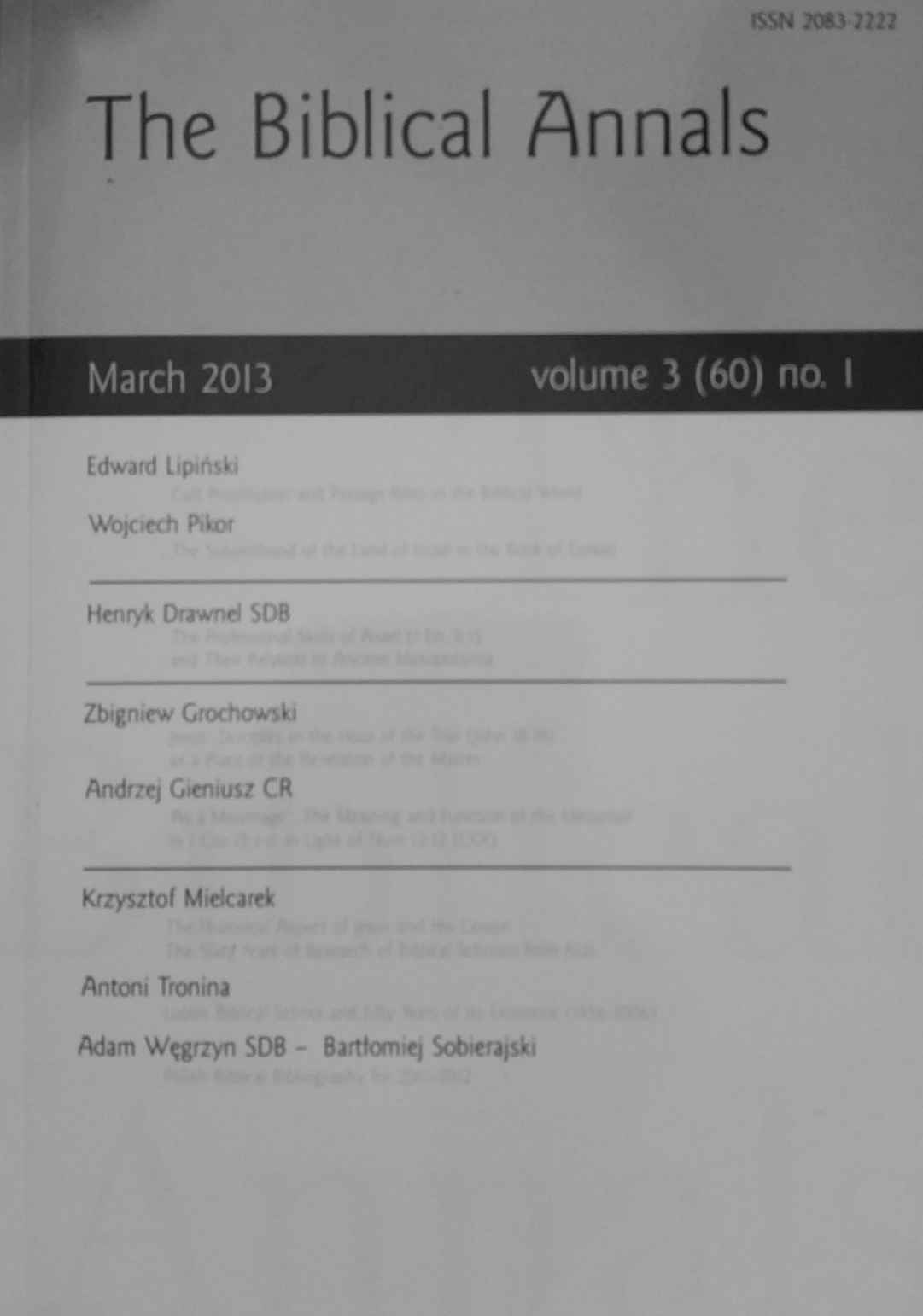Cult Prostitution and Passage Rites in the Biblical World
Cult Prostitution and Passage Rites in the Biblical World
Author(s): Edward LipińskiSubject(s): Christian Theology and Religion, Language and Literature Studies, Cultural history
Published by: Katolicki Uniwersytet Lubelski Jana Pawła II - Wydział Teologii
Keywords: Old Testament; cult prostitution; passage rites; words qe dēšāh; qādēš; ’ăšērāh; mipleṣet; sanctuaries of Eryx; Sicca Veneria; Pyrgi; Dura-Europos
Summary/Abstract: Modern Bible translations often mention ‘cult prostitutes’, female or male, and relate them to a goddess called Asherah. Sacred prostitution is attested in the ancient Near East and in some Phoenician-Punic colonies in the West, but such cult practices are rarely distinguished in modern publications from passage rites with sexual connotations. Moreover, the biblical words qedēšāh and qādēš are related to cult prostitution, while biblical authors simply use them in the disparaging sense ‘harlot’ or ‘priestling’ without paying attention to scientifi c etymology. Besides, the alleged divine name Asherah of the Bible results from a misinterpretation of the Semitic common noun ‘shrine’, attested in Akkadian, Phoenician, Aramaic, and Hebrew. It is confused in various publications with the theonyms Ashtoreth or Ashrath, as happens occasionally in the Syriac translation of Judges. The only passage of the Bible referring possibly to cult prostitution is 2 Kings 23:7, that refers to ‘women renting houses as a shrine’, but its text is often ‘corrected’ and mistranslated. These problems are also illustrated in the article by archaeological data.
Journal: The Biblical Annals
- Issue Year: 3/2013
- Issue No: 60/1
- Page Range: 9-27
- Page Count: 19
- Language: English, Polish

